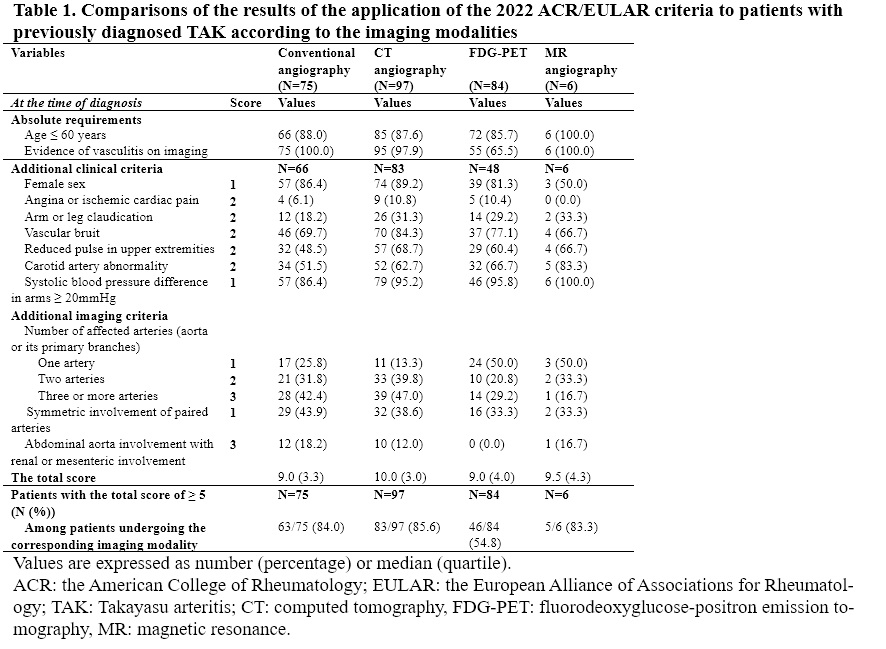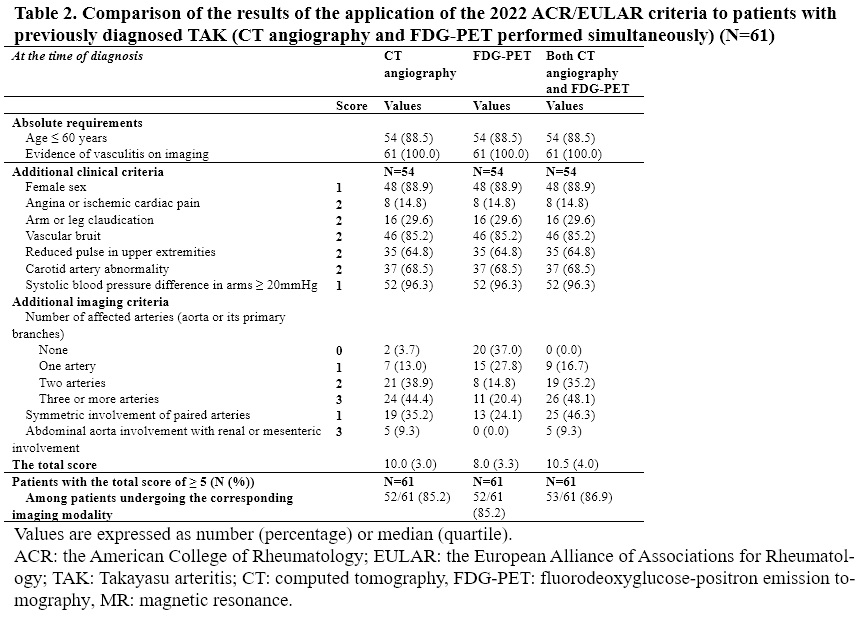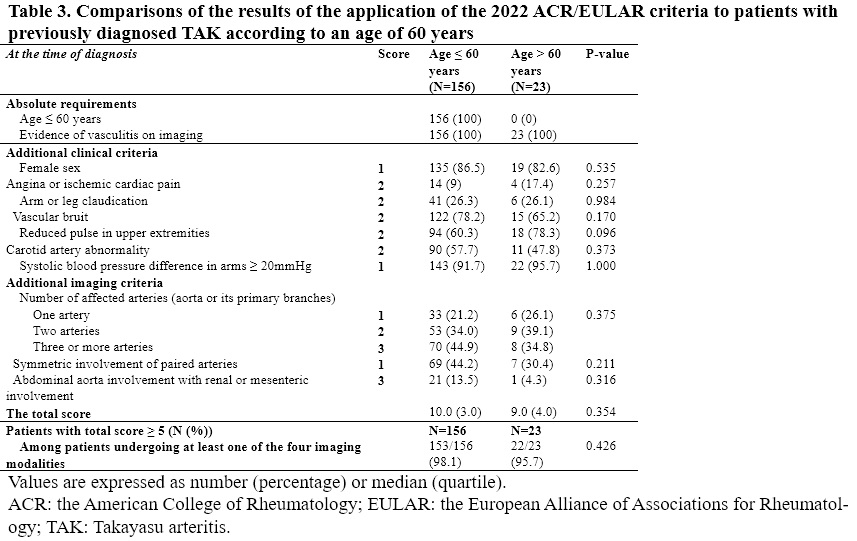Session Information
Date: Monday, November 13, 2023
Title: (1554–1578) Vasculitis – Non-ANCA-Associated & Related Disorders Poster II
Session Type: Poster Session B
Session Time: 9:00AM-11:00AM
Background/Purpose: Recently, a joint group of the American College of Rheumatology (ACR) and the European Alliance of Associations for Rheumatology (EULAR) proposed new criteria for Takayasu arteritis (TAK) (the 2022 ACR/EULAR criteria). This study applied the 2022 ACR/EULAR criteria to patients with previously diagnosed TAK based on the 1990 ACR criteria and investigated the concordance rate between the two criteria according to the four imaging modalities.
Methods: This study reviewed the medical records of 179 patients who met the 1990 ACR criteria for TAK. The imaging modalities included conventional angiography, computed tomography (CT) angiography, fluorodeoxyglucose-positron emission tomography (FDG-PET), and magnetic resonance (MR) angiography.
Results: Regardless of the imaging modalities, the concordance rate between the two criteria was 85.5% when including all patients, whereas, it increased to 98.1% when only patients aged ≤60 years were included. Among the four imaging modalities, CT angiography exhibited the highest concordance rate between the two criteria (85.6%). The concordance rate among patients aged >60 years was 95.7%. Only one patient aged 50—60 years was reclassified as having both TAK and giant cell arteritis (GCA).
Conclusion: The concordance rate was 85.5% regardless of the imaging modalities, and increased to 86.9% on simultaneous CT angiography and FDG-PET imaging. We suggest that the upward readjustment of the age requirement should be reconsidered not to miss patients with TAK over the age of 60.
To cite this abstract in AMA style:
Ha J, Ahn S, Song J, Park Y, Lee S. Application of the 2022 ACR/EULAR Criteria for Takayasu Arteritis to Previously Diagnosed Patients Based on the 1990 ACR Criteria [abstract]. Arthritis Rheumatol. 2023; 75 (suppl 9). https://acrabstracts.org/abstract/application-of-the-2022-acr-eular-criteria-for-takayasu-arteritis-to-previously-diagnosed-patients-based-on-the-1990-acr-criteria/. Accessed .« Back to ACR Convergence 2023
ACR Meeting Abstracts - https://acrabstracts.org/abstract/application-of-the-2022-acr-eular-criteria-for-takayasu-arteritis-to-previously-diagnosed-patients-based-on-the-1990-acr-criteria/



